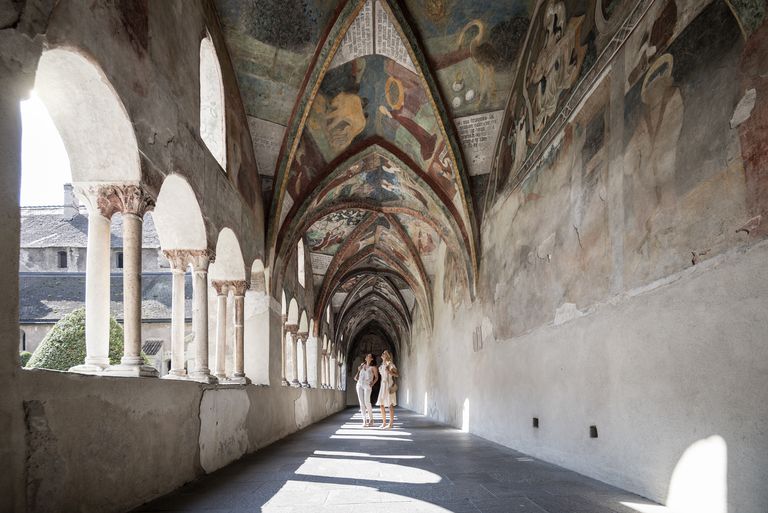First mentioned as “Prihsna” in records dating back to the year 901, Brixen is the oldest town in Tyrol. It lies at the point of confluence of the Eisack and Rienz rivers, and its history has been strongly influenced by the bishops who resided there from the 10th century onwards.
As prince bishops, they were not only churchmen, but also powerful secular rulers. Although most of their territories fell to the Counts of Tyrol over time, the bishops managed to retain their power over the towns of Brixen, Bruneck and Klausen until 1803. In 1964, the diocese of Bozen-Brixen was established, and after more than 1,000 years the bishop’s seat moved to the provincial capital of Bozen.
Brixen’s townscape, however, still bears witness to the prince bishops’ long presence, with a number of churches and monasteries scattered across town. These include, first and foremost, the magnificent Baroque cathedral, which took its current shape in the 18th century. Right next door is the cloister, extensively decorated with frescoes from the 14th and 15th centuries. Their size, artistic quality and state of preservation make them some of the most beautiful frescoes in South Tyrol.
Situated in the immediate vicinity, the Hofburg palace served as the bishops’ residence and administrative seat for centuries. Bishop Andreas of Austria had it rebuilt in Renaissance style around 1600. Today, it houses the Diocesan Museum, which displays the valuable cathedral treasure and fine examples of ecclesiastical art from the Middle Ages to modern times.
The traditional arcaded, bay-windowed houses feature heavily in the historical centre of Brixen, and are now home to a variety of shops, boutiques, cafés and restaurants.
Baroque splendour and excellent white wines
The Augustinian Canons monastery in Neustift was founded in 1142 by Blessed Hartmann, bishop of Brixen, and became one of Tyrol’s richest and most influential monasteries thanks to numerous donations.
Over the centuries, it survived the Peasants’ Revolt, epidemics, secularisation and world wars, its cloisters preserving Gothic frescoes dating from the 14th and 15th centuries. The complex features, among other things, a collegiate church lavishly decorated with frescoes and stucco work, and an impressive rococo library hall. The Neustift monastery is still inhabited by Augustinian monks, who run a secondary school, a convention centre and a museum displaying Gothic altars and a collection of valuable manuscripts.
The monastery grounds also include an extensive wine estate, which has been there since its foundation, and visitors have the chance to purchase its award-winning white wines directly on site.






